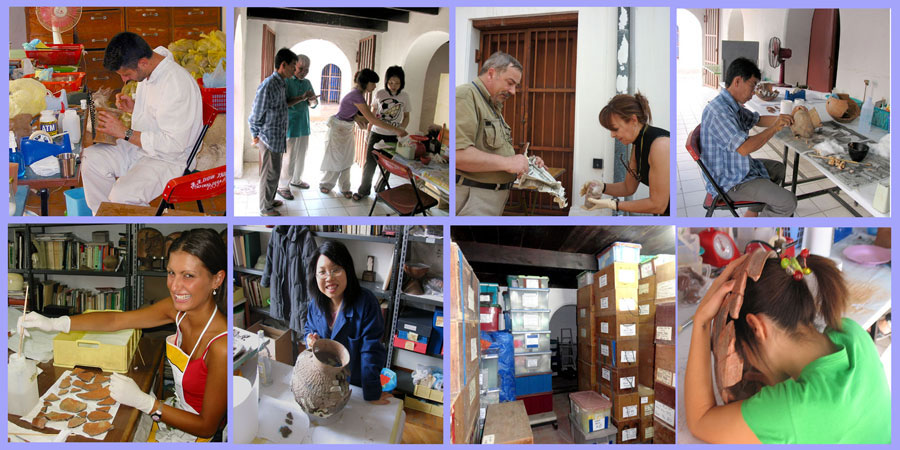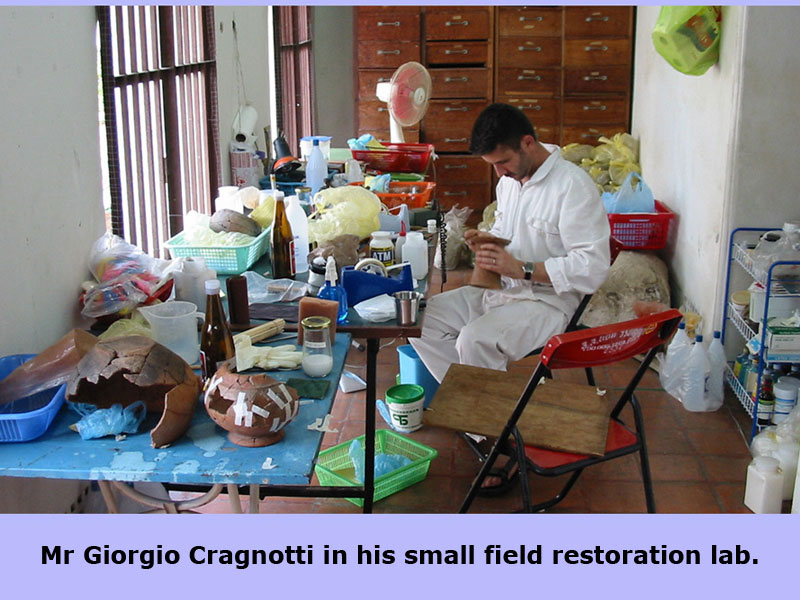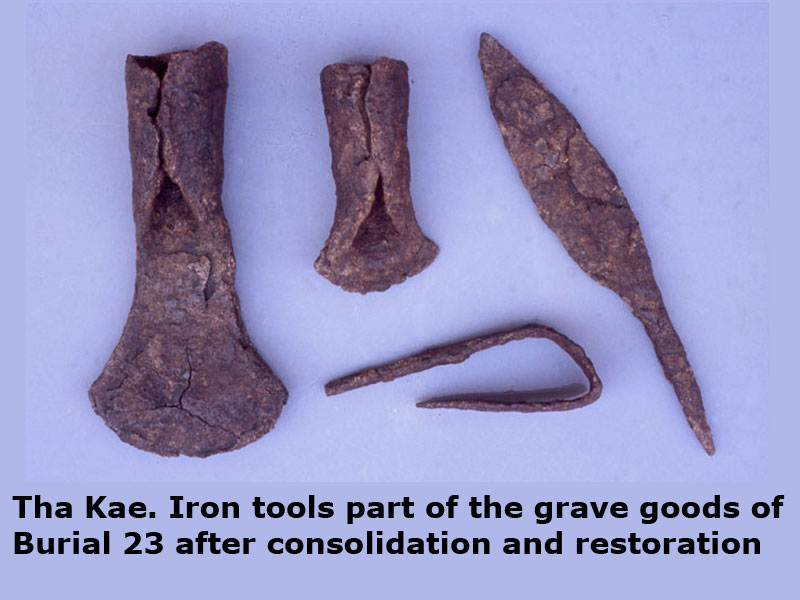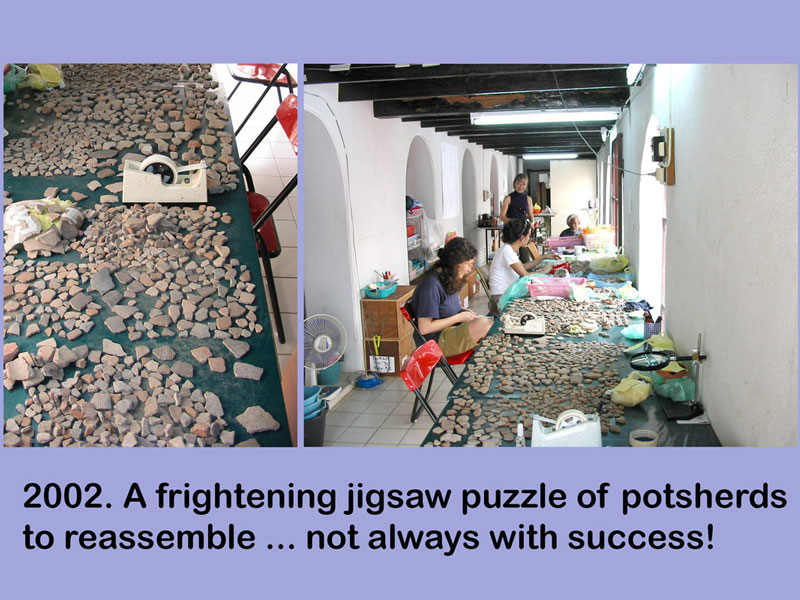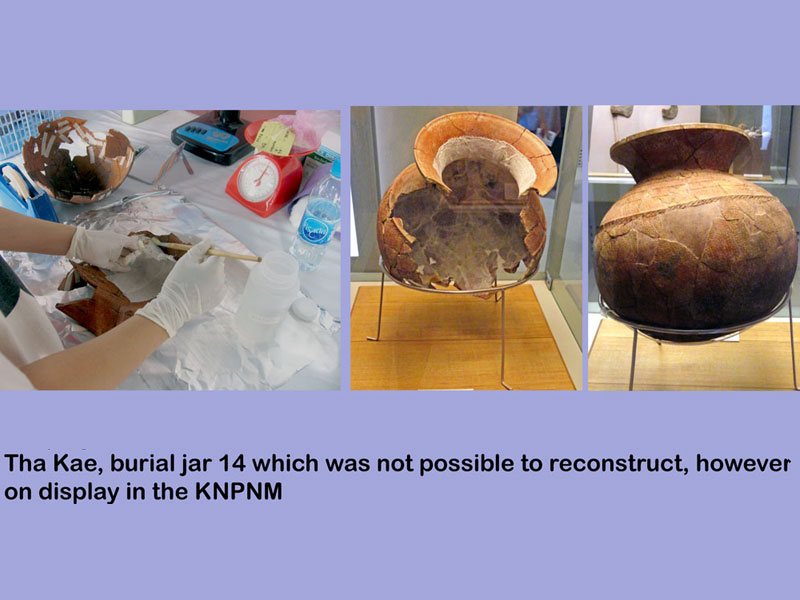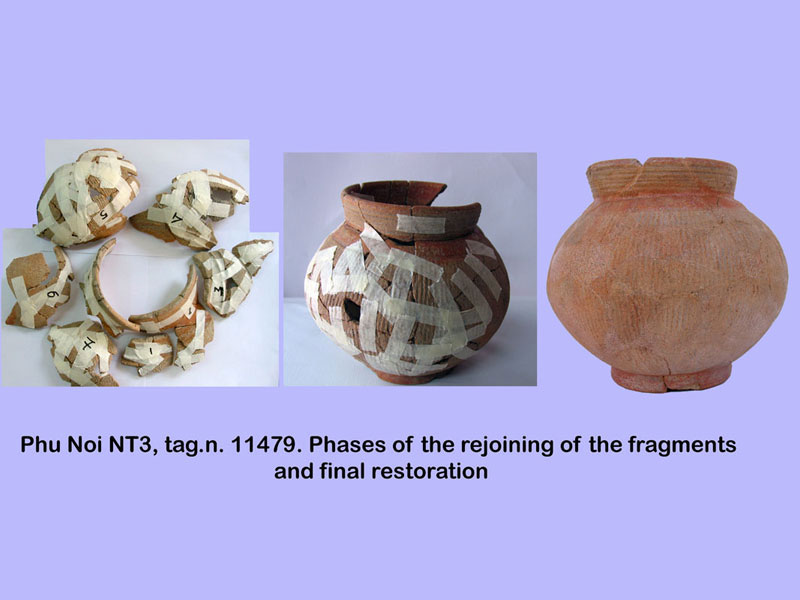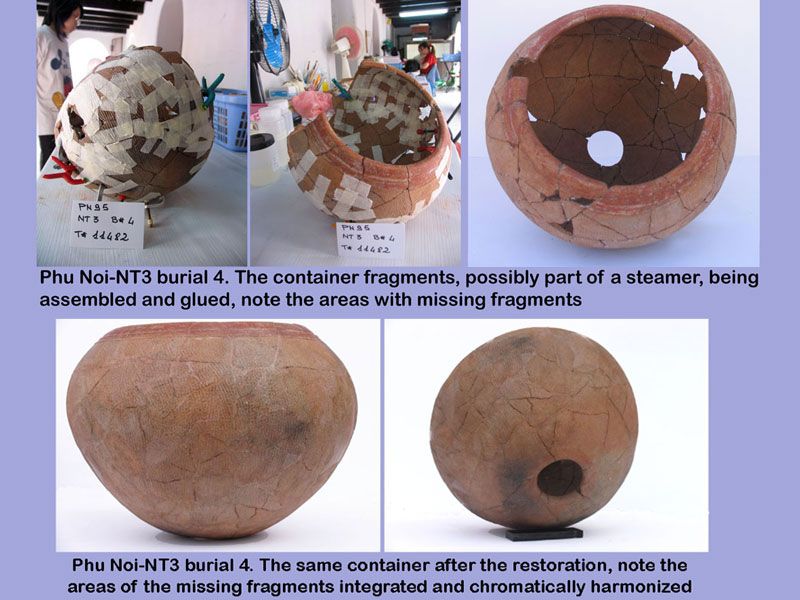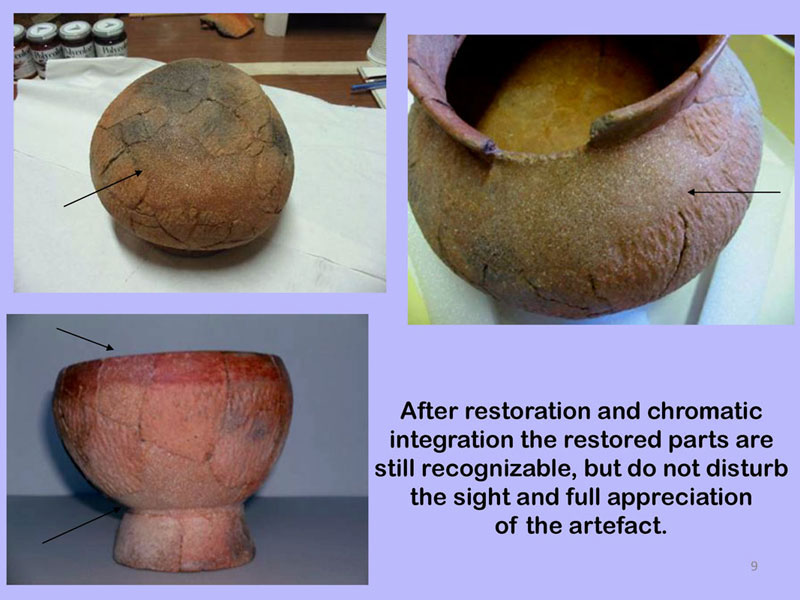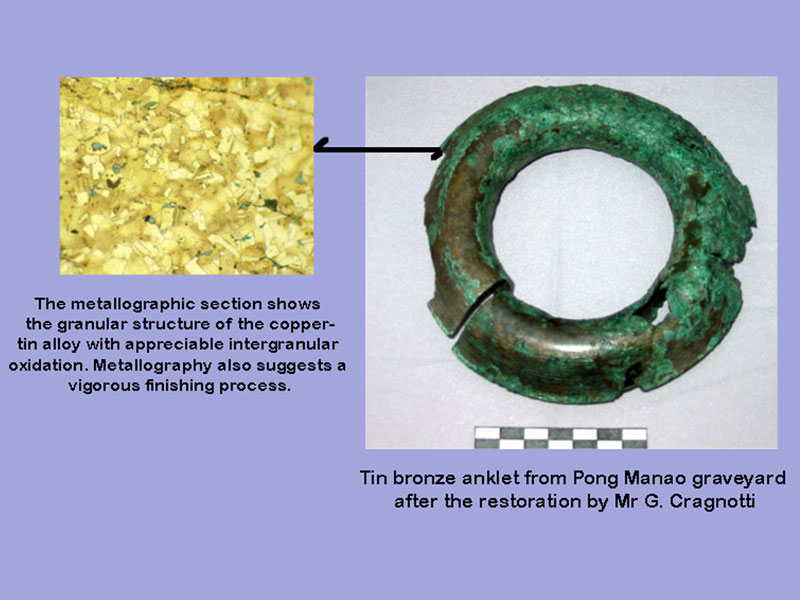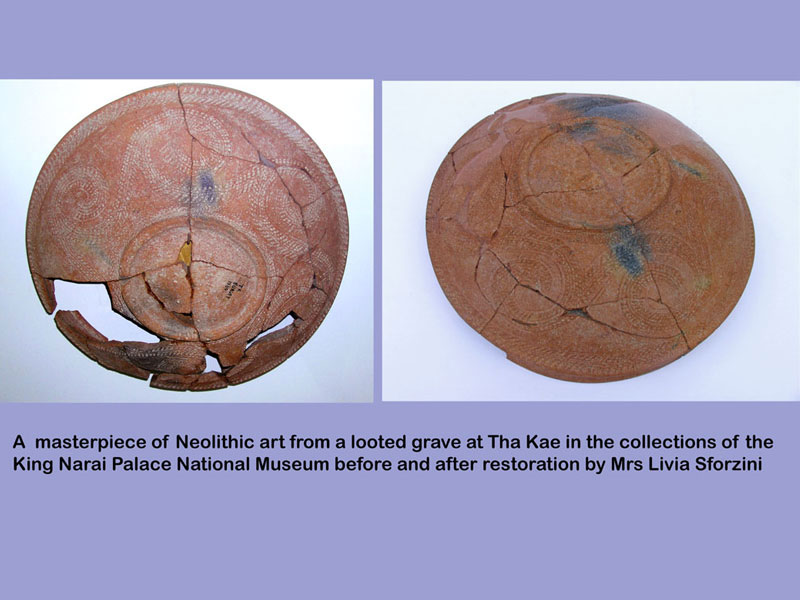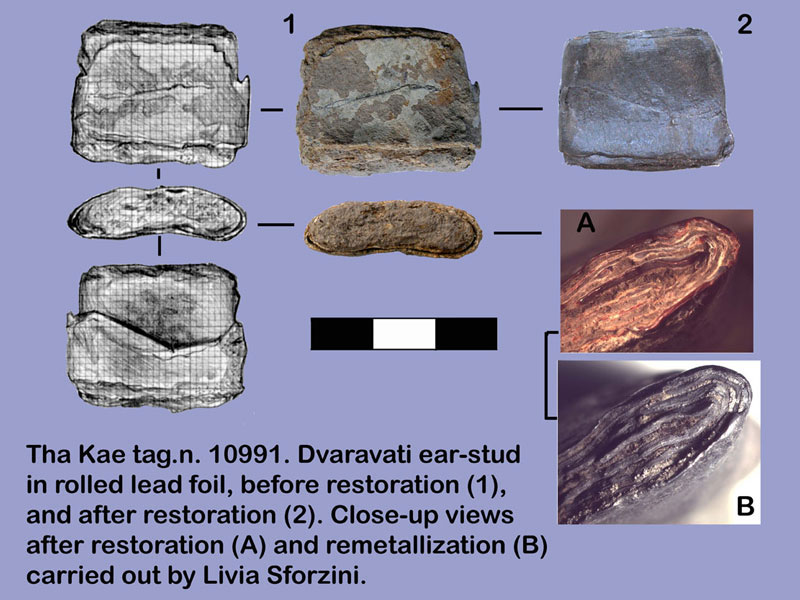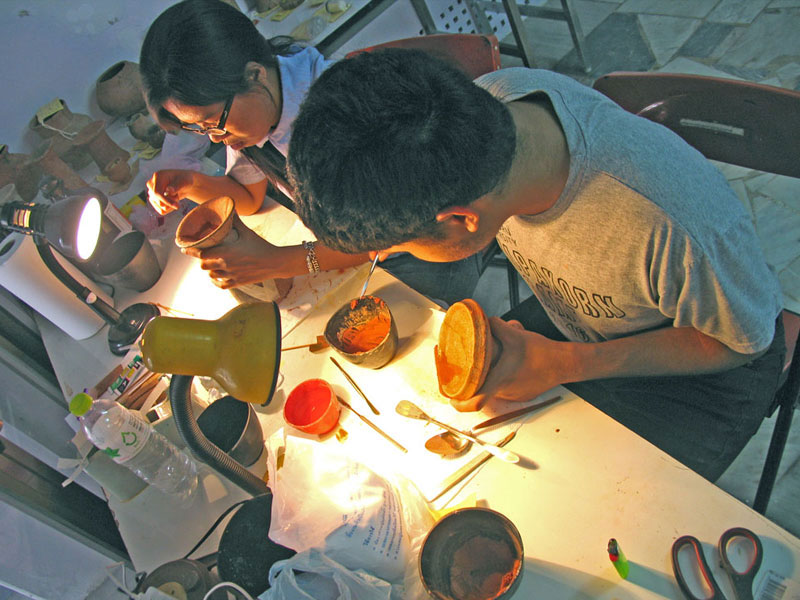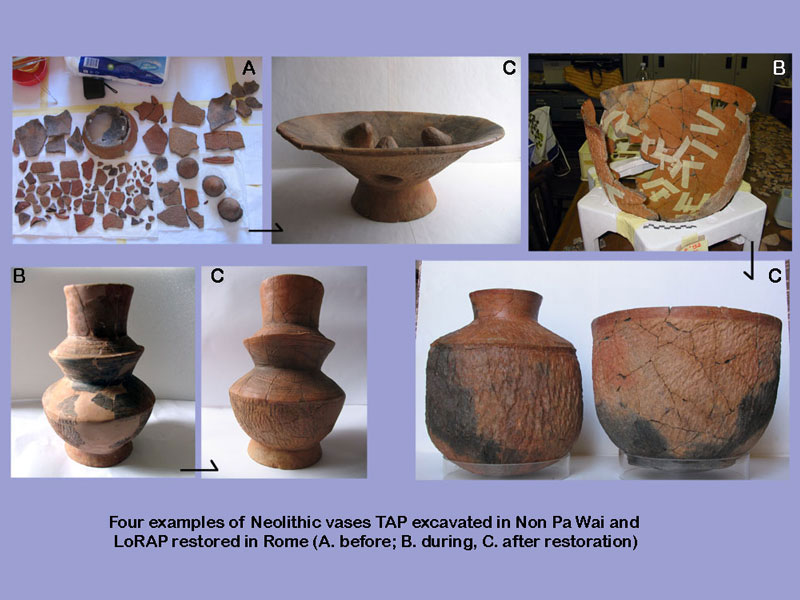1997, 2000, 2002, 2005, 2017
LoRAP conservation/restoration activities
No less relevant than fieldworks were the laboratory investigations and activities conducted on the various classes of artefacts (copper/bronze, lead, pottery, glass, glazed ware, shell, bone/antler).
The conservation and restoration work of the archaeological finds unearthed over the years were conducted in the spaces made available to us in the warehouses of the King Narai Palace National Museum, where we set up a small laboratory equipped with tools and restoration materials that, when not available in Thailand, we brought from Italy (Fig. 1).
The main objective of our conservation works was first of all identified in our deontologic need to best preserve, despite the limited means available, the most perishable materials, such as copper/bronze, iron, lead and terracotta (Fig.s 2-4).
Secondly, we tried to satisfy needs more directly related to the study of excavated artefacts, in particular the reconstruction of vessels shapes sufficiently complete -especially those from safe mortuary contexts-, so as to be photographed and drawn in order to elaborate synchronic and diachronic typologies (Fig. 5).
At the same time, the conservation/restoration of the ceramic vases allowed our ceramologist to observe the traces of their manufacturing and decoration methods. It has not always been possible to reconstruct the vessels in their entirety, in particular the ones intentionally smashed in the funerary ritual in order to create a surface of potshards inside the burial pit (what we call “bed of potshards”) on which to lay the deceased (Fig. 6).
Even in the case of the ceramic containers placed in the grave goods, presumably intact at the time of the funeral rite but broken for various reasons over the centuries, it was not always possible to recover them in their original tangible form (Fig. 7).
From this arose the need to proceed with the integration of the missing parts, both to overcome the stability problems of the reconstructed parts, and to restore dignity and, above all, visual enjoyment to the artifact reconstructed (Fig. 8).
This involved overcoming the integration of the gaps with white plaster left as it is (still often used in Asia), to proceed with the integration of the missing parts with alabaster plaster, then harmonized with the chromatic shades of the original ceramic surfaces. For this purpose we have resorted to the innovative method of pictorial integration called “dotted spray”, based on the theoretical elaboration and application experience of Dr. Giovanna Bandini, art historian and restorer-conservator of the Ministry of Heritage, Cultural Activities and Tourism, lecturer at the Central Institute of Restoration and the University of Rome “la Sapienza” (Fig.s 9-10).
The ultimate aim of our conservation interventions, in addition to wanting to restore the dignity and respect that are due to all the works of human creativity, including prehistoric artifacts, was the attempt to transmit the sensitivity and the know-how of the Italian schools of restoration to the local environment of restoration, where, perhaps by ancient tradition, the profession of restorer, especially in the field of restoration of prehistoric artifacts, has not yet assumed the scientific character and specialization typical of the Italian restoration.
Overall, thanks to short restoration campaigns in the years 1997, 2000, 2002, 2005, 2017, we have restored approx. 400 objects: 319 from the LoRAP excavations at Tha Kae, Phu Noi, Noen Din, 4 bronze objects from Pong Manao, 3 objects from Non Pa Wai (on display at KNPNM), 3 objects from the collections of the King Narai Palace National Museum (Fig.s 11-12).
In 2005 Mrs Livia Sforzini has also carried out a conservation test on Dvaravati lead-foil ear-studs from Tha Kae. Ms. Sforzini has successfully re-metallized the lead artefacts bringing them back to their original silvery color by applying a conservation method developed by the Conservation Laboratory of the Vatican Museums for the restoration of the “Papal Bubbles” (Fig. 13).
In 2017 two members of the 4th Regional Office-Thai FAD (i.e. Mrs Napatsorn Yaemkhong and Mr Vithan Srikajonhvitisak) have volunteered with excellent results for a short introductory stage on our method for restoring prehistoric ceramics (Fig. 14).
Out of the LoRAP’s restored artefacts, the Italian-Thai project delivered to the Thai FAD, 230 archaeological items, all of which have been deposited in the King Narai Palace National Museum for the enrichment of its collections and for the public enjoyment, bearing witness to the Italian contribution to the knowledge of prehistory and protohistory of Thailand (Fig. 15).
Finally, we report the restorations we carried out in Rome (2005-2007) on Neolithic and Iron Age ceramic vases from the sites of Non Pa Wai and Nil Kham Haeng, excavated by the Thai-American ‘Thailand Archaeometallurgy Project’. All these artifacts had been temporarily imported into Italy in the early nineties for study and restoration on formal export concession by the Thai FAD (Fig. 16).
